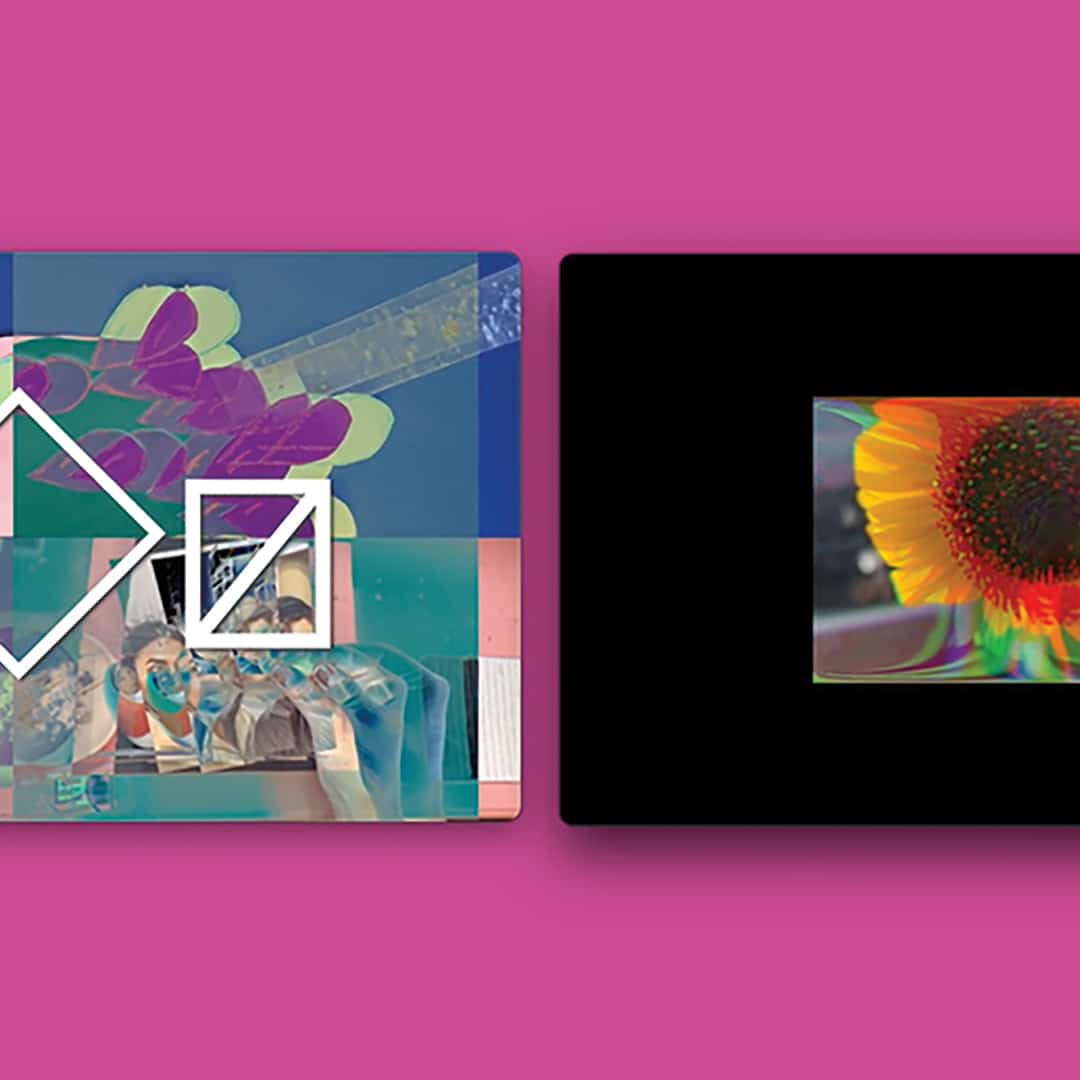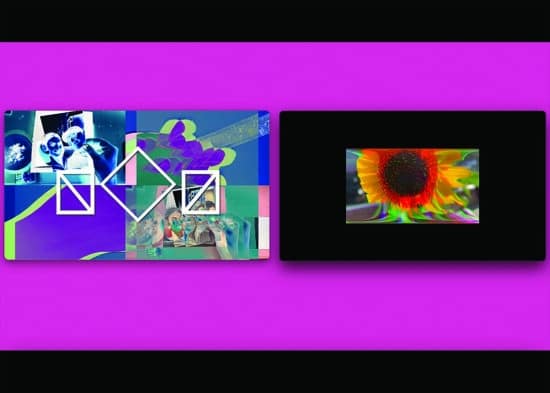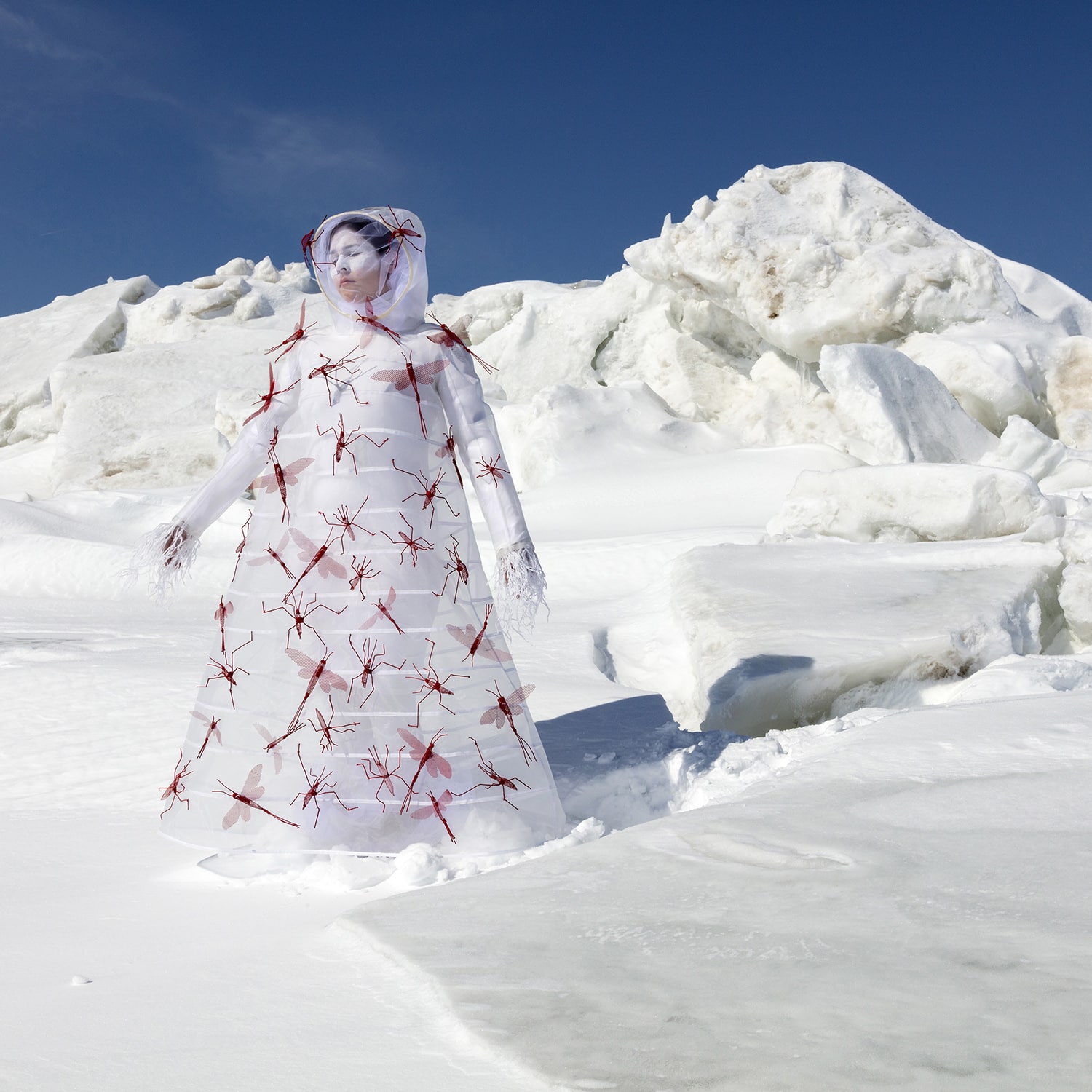
- This event has passed.
2024 IAIA MFA in Studio Arts Thesis Exhibition: We’ve Been Gathering Places
Fri, May 10, 5:00 pm–Sat, June 15, 5:00 pm
| Free

Graci Horne, Time Capsule, 2023, video still, 6:59
We’ve Been Gathering Places, this year’s Institute of American Indian Arts (IAIA) Master of Fine Arts in Studio Arts (MFASA) thesis exhibition, features the work of graduating students Joely BigEagle-Kequahtooway (White Bear First Nations–Nakota, Cree, and Saulteaux), Leah Mata Fragua (yak titʸu titʸu yak tiłhini [Northern Chumash]), Erin Ggaadimits Ivalu Gingrich (Koyukon Denaa and Iñupiaq), Lozen Lei-zha Haozous (Warm Springs Fort Sill Apache Tribe of Oklahoma), Mekko William Harjo (Quapaw Tribe of Oklahoma), Kéyah Keenan Henry (Diné), Hapistinna Graci Horne (Sisseton Wahpeton Oyate and Standing Rock Nation), and Daisy J. Trudell-Mills (Xicana, Santee Dakota, and Jewish descent). The exhibition will fill form & concept’s 10,000-square-foot space in the Santa Fe Railyard at 435 S Guadalupe St with suspended installations, large-scale wall sculptures, paintings, photographs, multichannel new media works, and interactive displays that create space to explore themes of belonging, sustainability, cultural identity, and Indigeneity. The exhibition, on view from May 10–June 15, 2024, opens with a reception at form & concept on Friday, May 10, 5–7 pm.
A culmination and celebration of two years of rigorous studies by the program’s graduating cohort, We’ve Been Gathering Places decompresses and telescopes space. Unspoken personal histories transform into visual experiences that inquire into the nature of incorporeal phenomena, like memory, as in Daisy Trudell-Mills’s The birds above me place me on the ground; Sprawling landscapes become subtle topographies of ancestral memory and ecological consciousness, as in Leah Mata Fragua’s handmade paper works; and imaginative futures manifest themselves in our physical present, as in Joely BigEagle-Kequahtooway’s Buffalo Utopia/Human Dystopia, which features four life-size Buffalo figures imagined as the protectors of a post-colonial utopia where the environmental degradation of late-stage capitalism has ended.
The concentration on place unifies the work of the cohort, whose roots span North America, from Southcentral Alaska to Western Canada to Santa Fe, New Mexico, and beyond. “There are references to places in the exhibition— a Hogan, iconic earthworks, specific landforms,” says Mario A. Caro, PhD. (Colombian Mestizo), MFASA Director. “But the students are also identifying their cohort and themselves as gathering places—for ideas, experiences, and histories that flow out into discrete material vessels and sprawling installations.”
The exhibition comes at a sensitive time for an art market still reeling from low consumer confidence in the aftermath of COVID-19. Often, deeply personal and challenging stories are rarely commercially viable, but form & concept is hoping to flip the paradigm, to find the universal in the personal. “This exhibition reflects the remarkable geographic and cultural range of program participants, but it’s also a portrait of a community that has grown increasingly enmeshed through mutual inspiration and critique. This show holds individual thesis projects, but they undeniably rise in chorus,” says Jordan Eddy, form & concept Director.
For press or image inquiries, please contact Spencer Linford at spencer@formandconcept.center. Form & concept may be contacted at info@formandconcept.center or (505) 982-8111.
Participating Artists
Joely BigEagle-Kequahtooway (White Bear First Nations) is an interdisciplinary land-based buffalo artist. She is a fashion and textile designer, visual artist, beader, storyteller, and co-founder of the Buffalo People Arts Institute. She is Nakota, Cree, and Saulteaux from the White Bear First Nations—signatory to Treaty 4. She has degrees in Civil Engineering from the University of Calgary and Mathematics from the First Nations University of Canada. She is currently in the Master of Fine Arts program at the Institute of American Indian Art in Santa Fe, New Mexico. She loves to incorporate mathematics and geometry in her artwork and is inspired by the perfect symmetry in nature. Her mantra envelopes everything Tatanga (Buffalo), as it connects her to ancestral memories and the land and is the manifestational glue that keeps her world together.
Leah Mata Fragua (Northern Chumash) is an artist, educator, and member of the yak titʸu titʸu yak tiłhini (Northern Chumash) tribe located on the Central California Coast. As a place-based artist, Leah’s kincentric approach seamlessly blends shared iconography with personal imagery, highlighting the impact each has on the other. She uses a diverse range of materials, from found to organic, traditional to modern, to explore the interconnectedness and dependence between land, kinships, and self. She understands that her art is a reflection of the way she prioritizes the protection of traditional materials and the continuation of art forms that are important to her community and intersect with her individual practice.
Erin Ggaadimits Ivalu Gingrich (Koyukon Denaa and Iñupiaq) is a carver, interdisciplinary artist, and scholar living, working, and subsisting in the subarctic climate of South-Central Alaska. Through carved, painted, and beaded sculpture and mask forms, photography, film, installation, poetics, and design, Ivalu creates representations of the revered wild relatives and homelands that have provided for her, her family, and her ancestors since time immemorial. Connection to the realities of subsistence lifeways and Arctic survival is vital to Ivalu’s work, which mirrors what keeps us fed, warm, and present in the circumpolar north. With ancestral ties to the communities of Nulato, Nome, and Utqiagvik, Ivalu currently resides between the Denaʼina Homelands of Anchorage and Cohoe, Alaska.
Lozen Lei-zha Haozous (Warm Springs Fort Sill Apache Tribe of Oklahoma) was born and raised in Santa Fe, New Mexico. She is a part of the Fort Sill Apache Tribe of Oklahoma. She got her Bachelor of Fine Arts degree in Photography and Media at the California Institute of the Arts and is continuing her education at the Institute of American Indian Arts in Studio Arts. She is a digital photographer who creates work about her identity as a Native American and Hispanic woman and addresses her speech disability through her photography. She also likes to photograph local models as part of the New Mexico Street Meet and experiment with creative shoots.
Mekko Harjo (Quapaw Tribe of Oklahoma) is an interdisciplinary artist living in Brooklyn, NY. Harjo received his BA from Bard College in 2009 and will receive his MFA from the Institute of American Indian Arts in May 2024. Harjo has exhibited in venues across the country, including SITE Santa Fe in New Mexico, 321 Gallery, Jane Hartsook Gallery, Choplet Gallery in New York, and Self Help Graphics in Los Angeles. Harjo was selected as a SITE Scholar for the 2022-2023 season and was a 2023 fellow at The Workshop, NY. Harjo was a winter resident at the Wassaic Project, NY, in 2024. Harjo is an enrolled member of the Quapaw Tribe of Oklahoma.
Kéyah Keenan Henry (Diné) is a multimedia artist from Mariano Lake, NM. He is Salt clan, born for Towering House clan. His parents are Jennie DeGroat and the late Kenneth Bill Henry. He earned his BFA in Studio Arts from Northern Arizona University and will graduate this spring with an MFA from the Institute of American Indian Arts. For twenty years, he worked as an auto body technician before returning to school to study art professionally. As an artist, Keyah weaves traditional Diné teachings with modernity to create contemporary, sustainable works of art. As a person in sobriety, he uses art as a catalyst to heal.
Hapistinna Graci Horne (Sisseton Wahpeton Oyate and Standing Rock Nation) was born and raised in Mnisota [Minnesota]. Her bands are the Sisseton Wahpeton Dakota people and Hunkpapa Lakota and Dakota people. She is a mixed media artist working in acrylic paint, ink, and watercolor, and she also creates works in photography, film, and poetry. Horne holds a degree in Museum Studies from the Institute of American Indian Arts in Santa Fe, NM. Her specialty is curation and exhibition planning. Horne loves to combine art and protecting Grandmother Earth. Horne’s projects encompass using art to raise consciousness and engage viewers to preserve the earth.
Daisy J. Trudell-Mills (Xicana, Santee Dakota, and Jewish descendant) is a queer multidisciplinary artist of Xicana, Jewish, and Dakota descent working in installation, textiles, found materials, and illustrations on fabric and paper. Daisy’s work explores personal, place, and material-based narratives. Their work has been exhibited in New Mexico, Seattle, and Chicago. They received the Lorraine Shula Scholarship in 2017, the National Museum of Women in the Arts Scholarship in 2019, and the SURFACE: Emerging Artist of New Mexico Award in 2021. Recently, they were a recipient of the Kindle Project: Makers Muse Grant 2022-23. Daisy is pursuing a Master of Fine Arts in Studio Art with a concentration in Interdisciplinary Practice at the Institute of American Indian Art. They earned their Bachelor of Fine Arts with a concentration in Sculpture from New Mexico Highlands University in 2019.
